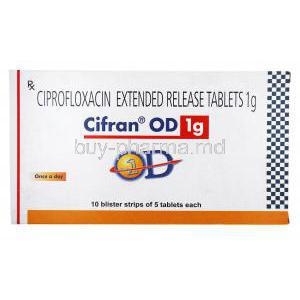Betahistine SR
- Â
- Introduction
- Â
- Composition
- Â
- Uses
- Â
- Off-Label Use
- Â
- How It Works
- Â
- Dosage and Administration
- Â
- Side Effects
- Â
- Common Side Effects
- Â
- Interaction
- Â
- Warning
- Â
- Contraindication
- Â
- Careful Administration
- Â
- Important Precautions
- Â
- Administration to Elderly
- Â
- Administration to Pregnant Women and Nursing Mothers
- Â
- Administration to Children
- Â
- Overdosage
- Â
- Handling Precautions
- Â
- Conclusion
Introduction
Thanks to its sustained release formula, Betahistine SR plays a role in treating inner ear disorders, especially Ménières disease and related vertigo issues; over time, this medication has undergone clinical testing and is now seen as a ray of hope for individuals struggling with vertigo and tinnitus symptoms. Its significance goes beyond symptom control; it aims to improve the overall quality of life for those enduring these long-term health challenges.
Composition
- Betahistine SR's core component is betahistine dihydrochloride, an active substance that mimics histamine and works to rebalance the system by producing various therapeutic effects.
- In addition to the ingredient excipients play a crucial role in maintaining the drugs stability enhancing its bioavailability and controlling its release for optimal therapeutic outcomes.
- The sustained release mechanism within the formulation showcases the art of pharmaceuticals by regulating the distribution of the drug over time, resulting in a consistent plasma concentration and minimizing fluctuations seen in traditional formulations.
Uses
Betahistine SR goes beyond relieving symptoms to impact a patient's daily life and overall well-being significantly. Its key uses highlight its importance in treating Ménières disease, characterized by vertigo, tinnitus, and fluctuating hearing loss. The drug's effectiveness is shown in how it helps with vertigo not as a symptom but as a significant challenge in everyday life. Both clinical studies and personal stories confirm that Betahistine SR can help restore balance symbolically for those dealing with balance issues. The tale of Betahistine SR showcases innovation, providing hope for those facing the challenges of Ménières disease and related vestibular disorders.
Off-Label Use
The use of Betahistine SR goes beyond its purposes and extends to unconventional applications, exploring its versatility. One notable area is its effectiveness in treating Migraine migraine-associated vertigo, offering comfort to those dealing with a mix of neurological and vestibular issues. Additionally, its use in managing Vestibular migraines reveals an understanding of migraines' underlying mechanisms, giving hope to individuals struggling with both migraines and vertigo. Delving into territories, the potential applications of Betahistine SR in Psychiatric Disorders hint at a broader range of therapeutic possibilities, potentially alleviating symptoms in cases where vestibular problems intersect with psychiatric issues.
How It Works
- Pharmacodynamics; How Betahistine SR Works on Inner Ear Circulation: Betahistine SR's way of functioning showcases its cleverness by improving blood flow in the inner ear, which helps reduce the dizzying whirlwind experienced in Ménières disease and similar conditions.
- Effects on Vestibular Compensation; It also helps in aiding vestibular compensation, an essential neurophysiological process that assists in regaining balance after a vestibular system injury thereby reducing the intensity and frequency of vertigo episodes.
- Impact on Histamine Receptors: The drugs' impact on receptors, especially H1 and H3, is crucial for its therapeutic benefits as it regulates activity in vestibular neurons and supports balance.
Dosage and Administration
Maximizing the healing benefits of Betahistine SR involves following the suggested dosage instructions, customized to meet each patient's requirements for effectiveness while minimizing adverse side effects. Fine-tuning the dosage for results is both an art and a science, striking a careful balance between therapeutic benefits and tolerability. Additionally, adhering to tips on administering the sustained release formulation is crucial to maintaining steady drug levels in the blood, resulting in gradual symptom relief over time.
Side Effects
The experience of using Betahistine SR to treat Ménières disease has its advantages. It also poses particular challenges. These challenges arise from side effects varying from manageable inconveniences to rare yet more severe conditions. Recognizing these effects and employing strategic measures to improve treatment outcomes and enhance patient well-being is crucial.
- Overview of Common and Uncommon Side Effects: Typical side effects may include issues, headaches, and drowsiness, typically mild to moderate. On the side, patients may face severe skin reactions that require prompt medical attention.
- Managing Side Effects and Mitigation Strategies: Effective management techniques involve adjusting dosages, offering care, and sometimes discontinuing treatment based on medical advice. Maintaining communication with healthcare professionals ensures a personalized approach to handling these side effects efficiently.
Common Side Effects
The side effects of Betahistine SR mainly consist of less severe reactions. Though temporary, these effects can affect the patient's routine and overall health.
- Gastrointestinal issues like nausea, indigestion, and stomach aches are frequent. It can be managed by adjusting diet or taking the medication with meals.
- Headaches and drowsiness which may disrupt activities tend to lessen as the body gets used to the medication.
- Skin reactions like rashes and itching are less frequent. Require monitoring for any signs of allergic responses that may need medical attention.
Interaction
The complex dance of how medications work in the body gets even trickier when we think about how Betahistine SR might interact with substances. It's essential to be careful and thoughtful when navigating these interactions to ensure the treatment works well and keeps patients safe.
- When it comes to mixing drugs, it's important to be cautious about combining Betahistine SR with antihistamines and MAOIs, as they could affect each other in how they work and how they move through the body. This might mean adjusting doses.
- As for food and lifestyle choices while we don't have a lot of information on specific food interactions with Betahistine SR it's generally a good idea for patients to eat a balanced diet and limit alcohol intake to help prevent stomach issues.
- In some cases, Betahistine SR could impact the results of specific lab tests. Healthcare providers need to know if a patient is on Betahistine SR so they can correctly interpret test results.
Warning
The use of Betahistine SR can be helpful for people, but it's essential to be cautious. In cases where the balance of the ear system is already compromised, like in patients with inner ear issues, introducing Betahistine SR requires a careful approach. It's also crucial to consider the possibility of overstimulating the ear system. Although rare, this highlights the importance for doctors to carefully adjust treatment plans to maximize the benefits without causing activity in the inner ear.
Contraindication
- Absolute Contradictions: When it comes to using Betahistine SR, there are some no-go. Patients with a history of pheochromocytoma, a condition where adrenaline is overproduced, need to be extra careful as there could be risks involved. Also, if someone reacts to Betahistine or any of its components, it's like hitting a roadblock for prescribing it.
- Relative Contradictions: Dealing with the subtle issues of relative contradictions requires careful consideration. Conditions like ulcers or asthma don't completely rule out the use of Betahistine SR but require a cautious and thoughtful approach. It's about finding the right balance between the treatment benefits and avoiding potential harm in these cases.
Careful Administration
The importance of medicine is deeply felt in the use of Betahistine SR. Understanding the characteristics of each patient's medical condition is crucial. Customizing treatment to meet requirements enhances the effectiveness of therapy and reduces the chances of adverse outcomes. The foundation of this approach lies in careful monitoring and thoughtful adjustments to treatment. This active process, a symbol of expertise, ensures that Betahistine SR is administered cautiously, improving its effectiveness while prioritizing patient health and safety.
Important Precautions
- When administering any medication, it's crucial to take an approach, especially when dealing with potent and specific drugs like Betahistine SR. One of the concerns is being vigilant about identifying and managing allergic reactions. Allergic reactions to betahistine or its components can lead to anything from minor skin rashes to anaphylaxis. Healthcare providers need to be able to spot signs of allergies and be ready to act quickly and decisively.
- Patients with a history of ulcer disease require a careful approach when being prescribed Betahistine SR. Since there is a risk of worsening issues, these individuals need close monitoring for any signs of stomach problems, adjusting doses as necessary to minimize risks while still achieving therapeutic benefits.
- In addition, the focus on safety also applies to individuals with asthma. Balancing symptom management without making asthma worse requires a cautious prescription plan, ensuring that the advantages of using Betahistine SR outweigh any potential risks.
Administration to Elderly
The older population often has health issues requiring careful management when using Betahistine SR. Adjusting the dosage is crucial due to changes in how the body processes drugs as people age, such as metabolism and clearance rate alterations. Monitoring the drug's effectiveness and tolerability in older individuals is essential to ensure treatment goals are achieved safely.
Additionally, seniors often deal with taking medications at once, along with other health conditions. This situation calls for a thorough review of all prescribed drugs to prevent interactions and customize better treatment within the patient's overall medical care plan.
Administration to Pregnant Women and Nursing Mothers
The decision to give Betahistine SR to women and breastfeeding mothers is based on a thorough evaluation of risks. Due to the lack of clinical data, a cautious approach is necessary, balancing potential benefits with the risks to the health of the fetus and newborn. In cases where Betahistine SR treatment is essential, guidelines stress using doses and keeping therapy duration as short as possible to achieve the desired treatment results.
Overall, the thoughtful use of Betahistine SR in patient groups highlights the importance of personalized care. By following recommended precautions and customizing treatment plans according to each patient's needs, healthcare providers can enhance outcomes while protecting patient well-being.
Administration to Children
Administering Betahistine SR to children requires consideration, focusing on age-appropriate dosages and safety precautions. Healthcare providers must calculate doses based on the child's weight to ensure effectiveness and minimize potential side effects.
- Dosage adjustments should consider the child's age, weight, and overall health condition to tailor the treatment.
- Limited clinical research on how children tolerate Betahistine SR underscores the need for cautious use under thorough monitoring.
Overdosage
Taking a lot of medication makes it essential to identify symptoms and promptly act quickly. Symptoms can vary from stomach issues to more severe problems like seizures or heart-related issues.
- The first steps should be aimed at stopping the body from absorbing more of the medication and helping the body get rid of it faster with hospitalization for observation and treatment if necessary.
- Treatment plans usually include providing care addressing symptoms as they appear and might involve procedures, like washing out the stomach or giving activated charcoal.
Handling Precautions
Maintaining the effectiveness and quality of Betahistine SR depends on following storage guidelines. It's essential to store the medication at room temperature in a place shielded from light and moisture to avoid any deterioration. Properly managing and discarding expired medication is also crucial, as it helps minimize harm by adhering to environmental regulations.
- Pharmacies and healthcare centers should have procedures for safely disposing of unused or expired medication, prioritizing environmental protection and compliance with established standards.
Conclusion
This article discusses the points about administering Betahistine SR emphasizing the need for personalized dosages, careful monitoring of side effects and specific handling precautions.
- Future research directions could suggest refining dosing, especially for less researched groups like children and older adults.
- The potential benefits of Betahistine SR in improving treatment outcomes for patients with Ménières disease and other vestibular disorders are significant offering a quality of life through targeted therapy.
To sum up, using Betahistine SR based on individual patient needs is crucial in managing vertigo and related symptoms. This approach marks an aspect of treatment where precision is balanced with a strong focus on patient safety and well-being.
















